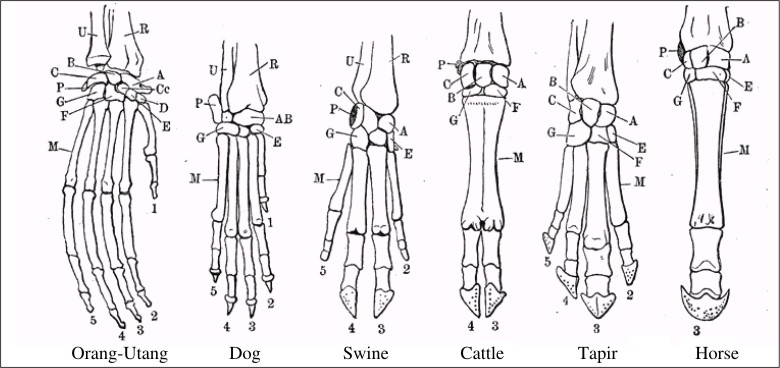How is new genetic material acquired? How much new genetic material can be acquired a gene at a time, or just a few genes - the ones desired? The new technology of DNA-sequencing lets us answer these questions directly.
The minimal heritable genetic change is a single base-pair change in DNA - from A-T to G-C (or from G-C to A-T). The maximal heritable change is the acquisition of an entire set of genes to run an organism (the genome) along with the rest of the organism in a healthy state so that the genome may have something to run. In between are many other ways in which organisms gain and retain heritable novelty. When the complete sequencing of the human genome was announced at the beginning of this millennium, many were quite surprised to learn that some 250 of the more than 30,000 human genes of our bodies have come directly from bacteria. These genes, long sequences of DNA that code for proteins, are as recognizably of bacterial origin as a feather is recognizably from a bird rather than, say, a shark's mouth.
How bacteria passed genes to people no one knows, but a good guess is via viruses. Bacteria are notorious for harboring viruses and moving them to new localities, such as to other bacteria.
The genome of the common yeast Saccharomyces cerevisiae has been fully sequenced, and it gave the scientists who did it a nice surprise. The chose S. cerevisiae-a single-celled fungus-as the representative of the fungus kingdom to sequence because this versatile little cell's life is tied to ours in many ways. This yeast makes dough rise, and therefore most baked goods - bread or cake or brioche - depend on it. It brews beer, therefore all beer with alcohol depends on happy growing conditions for Saccharomyces cerevisiae. It abounds in yougurt and other dairy products. It grows quickly and well under laboratory conditions and has been a favorite object of study in the investigation of fungal sex, fungal viruses, chromosome behaviour, growth, and survival as well as spore formation. Each Saccharomyces cerevisiae yeast cell, as was well known, is "haploid", which means it has only one copy of each of its ten chromosomes. (We human animals are diploid, which means each of us has two copies of each of our twenty-three chromosomes; one set comes from our father, the other comes from our mother). What surprised everyone was that haploid yeast had two copies of nearly all the genes.
The yeast story adds another item to our collection of ways to gain new genetic materials: duplication. Every organism that has been studied has some detectable degree of gene duplications; a part of an older gene, and entire single gene, a set of a few genes, a chromosome's worth, or - as in yeast - nearly every gene in the cell's little body. Just as extra copies of manuscripts or instruction booklets free up the originals to differ from the copies, extra sets of genes have proved to be very useful as yeasts and other organisms have evolved to larger sizes and more complexity. Principles of Evolutionary Novelty - Acquiring Genomes - Dr. Lynn Margulis and Dorion Sagan.














